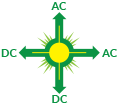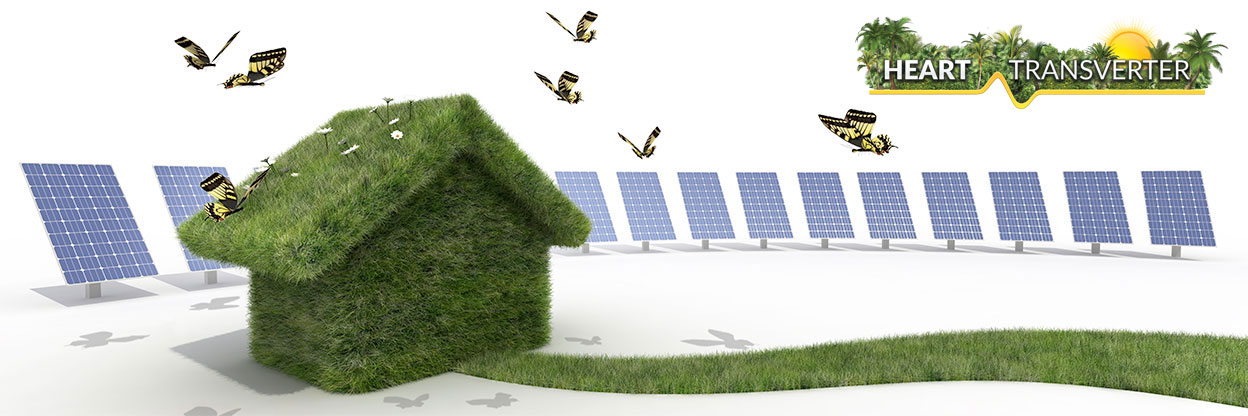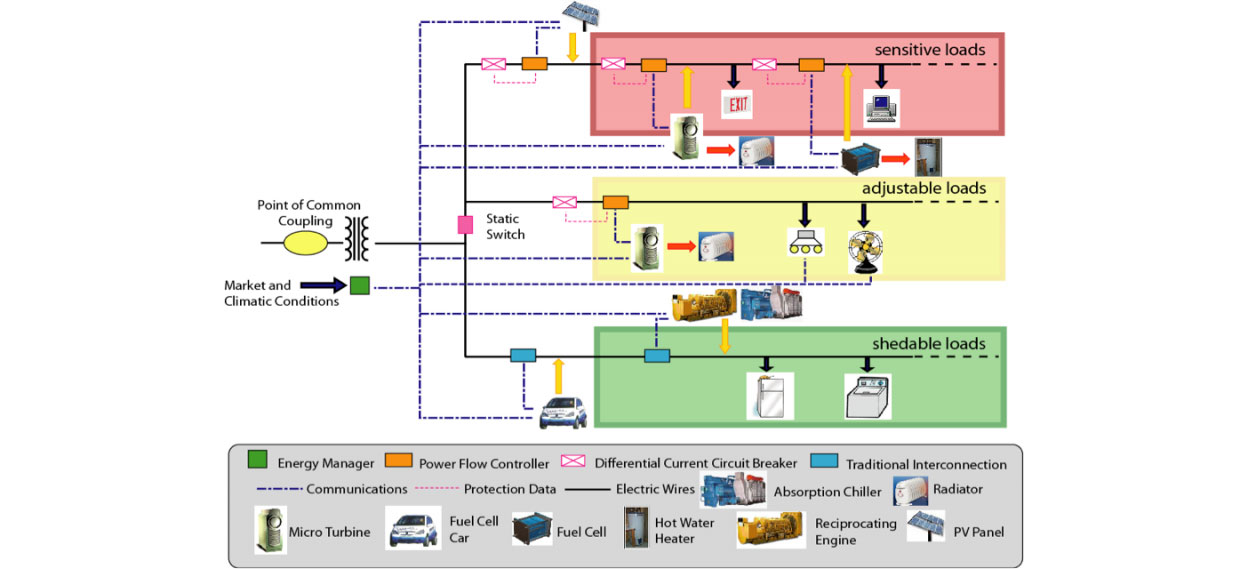
Real Systems for the Real World

Getting Real with the Smart Grid
How significant are the public’s resistance and disillusions with the Smart Grid? Boulder, Colorado was to be the shining example of a smart grid city but look at Boulder SmartGrid City. For the same $44.8 million that is ultimately coming out of the Boulder citizen’s pockets they could have installed the Transverter Smart Grid solution in 4,122 homes or the equivalent of 41.22 of their 100 house projects. This would have provided.
When you have an energy source, like a coal fired turbine, then the amount of coal you use is determined by the amount of real power being drawn. However, the limit of how much current the wires in your generator, transmission lines and the wires in the transformers can carry is based on current, not power. For this reason many generators, transformers and UPS systems are rated in volt-amps rather than watts. Also, the amount of power that is wasted in all of these wires is dependent on the amps, not the watts. Inductive motor loads can have their lagging current balanced out by connecting the right amount of capacitors across the line. The grid companies have very large banks of capacitors that they switch on and off to help balance out the power factor of the inductive loads. These capacitor banks are generally on the grid side of the transformers so they only give their benefits for the high voltage transmission lines and the generators windings but provide no benefits for the power factor induced losses in the transformers and lines to the houses. View more detailed paper.
- $14 Million paid out to local installers.
- 948 MWH/month energy savings from smart load management.
- 3.8 MW of distributed solar arrays producing 568 MWH/ month solar power which, combined with energy savings, reduces the draw on the grid by a total of 1,525 MWH/month.
- 16.5 MW of automatic surge assist to stabilize the grid.
- 16.5 MW of automatic power factor compensation to make the grid infrastructure more efficient.
- 24.7 MWH of installed batteries for Community Energy Storage.
- Autonomous stand alone energy security for 4,122 homes, enough for 25% of the families in Boulder.
Instead, what they got for their $44.8 million was Smart Meters for 43% of the homes and offices with little or no real perceivable benefit. This sharp contrast of measurable benefits is really starting to open people’s eyes. Smart Meter installations have been put on hold in Hawaii. In California movements are underway to stop installation of Smart Meters across the state and ordinances have been passed in Marin County and the cities of Fairfax, Cotati, Scotts Valley and Santa Cruz. Marin News
In short, the money is being spent but people want to see some real measurable benefits.
When you get this quantity of systems with autonomous stand alone capability, coupled with all of the Smart Grid features, the possibility of breaking off large sections of neighborhoods or entire buildings as microgrids becomes very attractive.

Schematic of the CERTS microgrid:
(The Consortium for Electric Reliability Technology Solutions)
More Links:
The Reality of Large Scale Grid Tie Solar
Smart Grid Failures in Germany
With this article from the Denver Post it looks like the real cost of the Boulder SmartGrid City is more like $100 million which means you could have put the Transverter Smart Grid Solution into 9,200 homes which would more than double the combined benefits listed above. Xcel Energy faces rate battle.
Microgrids and the Transverter
Read this detailed paper Transverters for Residential Solar & Microgrids. Along with the excitement about the Smart Grid many people are talking about microgrids. EDSA Makes Microgrids.
A microgrid is a section of the grid that can break away from the main grid and operate independently. Back in the 80’s we created the mobile power market for RV’s and boats with products now sold under the name Xantrex. These mobile power centers could operate off the grid when it was available but had a mixture of other sources of energy with batteries that were charged by the engine alternator, a separate generator and sometimes, solar panels. This was a large scale implementation of small systems and a lot was learned. A microgrid can be as small as your living room and kitchen or can include an entire neighborhood or a large factory. The Transverter system is designed to operate as a one home or office microgrid. However, it is also designed to be a very effective element of larger microgrids with many features that enhance the operation of a larger microgrid. Aside from the obvious features of a system like the CERTS the Transverter system brings these other benefits to a larger microgrid:
Delayed load application and soft starting.
Microgrids have a combination of power sources but they have more limited power than the grid itself. When a microgrid generator comes on it has to start all of the inductive motors that are connected and these take several times more power to start than to run. This can easily overwhelm a limited power generator. With the Transverter nodes in the microgrid there is a delay of several seconds after the generator is connected before the Transverters begin to connect. When they do connect they do a soft start which takes another several seconds. (What happens here is that before the generator comes on, the Transverter is running the critical loads from the battery and it very gradually shifts the loads from the battery to the generator after the generator starts). Then, even later, the Transverters very gradually apply the battery charging load.
T13X smart load controller.
This also injects programmable delays of the larger loads so that the generator has time to start all of the hard connected loads and stabilize before these loads are selectively added. After they are added they cycle between the larger loads so that they take turns and do not all come on at the same time. This, combined with the Delayed Load feature allows the same microgrid to be run on a generator with half the power of a microgrid without the Transverter systems. In fact, with an active communication system between houses, the larger loads would be dynamically cycled on and off so that the microgrid could always handle the combined load.
Integrated Renewable Energy.
Each Transverter system could have solar or residential sized wind or even fuel cells integrated automatically. This does not just lessen the load applied to the microgrid but it can contribute power to the microgrid. With many homes with significant RE sources the requirements for a microgrid generator could be vastly reduced.
Community Energy Storage.
Each Transverter system has its own battery bank and this can be used to smooth out the individual system’s power draw from the microgrid and even contribute power to the microgrid when needed according to rules set by the user. This feature combined with the renewable energy could sometimes reduce the demand on the microgrid generator to the point that it was not needed at all. To implement complete stand alone capability with no microgrid generator a transfer switch would be installed that replaced the grid with one small Transverter system. When this was active the communication system would cause all of the individual Transverter systems to operate by a different set of rules. They would all phase lock to the master but would combine their controls so that the net effect of all of the combined individual systems was basically zero. At any time, some individual systems would be drawing energy from the microgrid while others would be providing energy but the net effect would be zero. This would allow for 100% utilization of all available power even when some homes were unoccupied (the other homes would automatically use that homes solar power). A variation of this system would be where the microgrid generator was only run during the peak hours. There is already a strong need and funding for batteries to smooth out the integration of renewable energy New York Times CES and this can be imbedded in the Transverter systems. In fact, the $130 million system they describe in Hawaii (with a $117 million Federal loan guarantee) could instead install the Transverter Smart Grid solution in 11,964 homes or the equivalent of 119.64 of their 100 house projects. This would not only provide 48 MW of CES capability with 72 MWH of batteries (which is 60% larger than their wind farm and 7 times the size of their proposed battery bank) but it would also include 11 MW of installed solar arrays. In addition, all of the other benefits of the Transverter Smart Grid Solution would be included.
Similar systems are planned for New York and California. The Transverter load demand management, by itself, can level off a lot of their requirements for storing energy. The reason for such an extreme real value per cost difference is because the Transverter Smart Grid Solution is designed to address all of the energy issues in one integrated package rather than having separate projects that each address only one piece of the energy solution (like a 30 MW wind farm over here, a 10 MWH CES facility over there, smart meters in the homes, etc.)
With these features and an active communication network you could have all kinds of nesting and sub nesting for microgrids within microgrids, etc. The real deal here is that, with the Transverters used as elements of a microgrid, the microgrid can be made for a fraction of the normal cost and operate automatically.
Para más información contáctenos a: sales@transverter.com